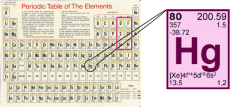Probing Mercury’s Partnering Preferences
Why it Matters: Mercury (Hg) is a major global pollutant arising from both natural and anthropogenic sources. In aquatic conditions, mercury is frequently bound to a variety of small molecules of inorganic or organic origin. Experimentally, it is known that sulfur-containing molecules are preferred but the reason is unclear. Defining the factors that determine the relative affinities of different atoms for the mercuric ion, Hg2+, is critical to understanding its toxicity, bioavailability, transport, and environmental fate.
Key Challenges: The relative affinities of metals for different molecules is frequently explained qualitatively with a theory known as Hard-Soft Acid Base, but consideration of experimental data sometimes leads to conclusions appearing to contradict HSAB theory. Reconciling osbservations and furnishing a theoretical basis for Hg2+ distribution amongst chemical species requires a high level of ab initio density functional theory.
Accomplishments: Using a NERSC computer allocation, researchers at Oak Ridge National Laboratory used quantum chemistry calculations to dissect the relative binding free energies for a series of inorganic anion complexes of Hg2+. Comparison of Hg2+-molecule interactions in the gaseous and aqueous phases shows that differences in interactions with a few, local water molecules led to clear trends within two groups from the Periodic Table (chalcogenide and halide) and resulted in the well-known experimentally observed preference of Hg2+ for "soft" ligands such as (sulfur-containing) thiols.
Investigators: The principal investigator in this work is Jeremy Smith (ORNL).
More Information: See, for example, "Why Mercury Prefers Soft Ligands," J. Phys. Chem. Lett., 2013, 4 (14), pp 2317–2322; DOI: 10.1021/jz401075b








